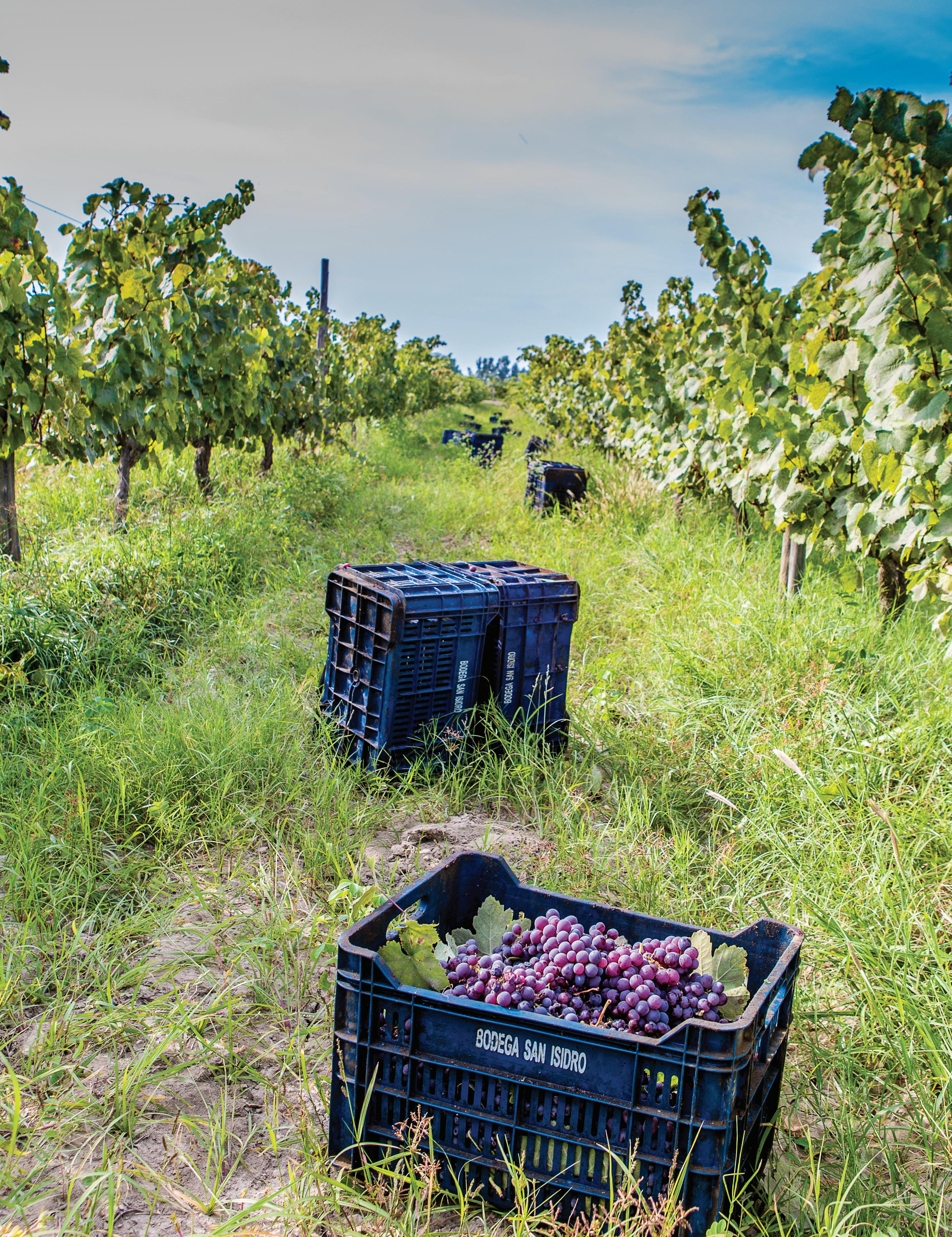
6 minute read
BarSol
- ICA VALLEY, PERU -
AUTHENTIC PERUVIAN PISCO BROUGHT TO LIFE THROUGH A DIVERSE RANGE OF TRADITIONAL EXPRESSIONS
Advertisement
THE REVIVAL OF BODEGA SAN ISIDRO | BarSol is leading the pisco renaissance into the modern age with the revitalization of the historic Bodega San Isidro in the Ica Valley region of Peru, which has long been recognized for its pisco production.
The historic Bodega San Isidro facility is located in the southern extremes of the Ica Valley pisco grape growing region, which is near the Tacaraca Huaca ruins dating back to the days of the Incas. The estate was founded in the 1800s; however, the oldest verifiable documents in the local town archives date back to 1919, when Bodega San Isidro and a series of plantations were all part of a single purchase/sale transaction.
Back in 1940, the bodega’s owner was a skilled master distiller named Doña Blanca Mendiola, whose family made renowned pisco for decades. Her only son, Don Alfredo Mendiola Martinez, took over from his mother in the 1960s, but sadly closed down the commercial operation in 1968 when the military government expropriated all their land. In 2002, the Bodega San Isidro found new ownership under Carlos Ferreyros and Diego Loret de Mola with a vision to bring to every “bar” in the world the ultimate pisco produced under the “sol” (sun) of Ica, hence the brand “BarSol.”
The pride of the distillery is the century-old, original estate-owned copper pot stills that are used to make all of BarSol’s piscos under the guidance of master distiller Alfredo Mendiola Martinez. In addition, the structure of the distillery has been reconditioned in order to maintain the artisanal style of the 100-year-old distillery.
PISCO & SAN FRANCISCO | Pisco was a veritable celebrity in San Francisco’s pre-Prohibition age. Thanks to the 1848 Gold Rush, the West Coast’s population ballooned and shipments from Peru increased dramatically, granting pisco a period of immense popularity.
The epicenter for consumption was a saloon called the Bank Exchange Saloon, standing where the Transamerica building is today. There, head bartender and owner Duncan Nicol is credited with inventing the legendary Pisco Punch. During the 1870s, the cocktail was by far the most popular drink in San Francisco, even though it sold for 25 cents a glass, a high price for those days. Seafaring fans dubbed Nicol “Pisco John,” and spread his fame across the seven seas.
Having never divulged his secret recipe to anyone else, the true formula for the punch’s preparation died with Nicol in 1926. Variations abounded after his death as bartenders strove to recreate the legendary cocktail, or its nearest approximation. Tragedy struck again with the onset of Prohibition, and it was only after Repeal in 1933 that the clamoring and thirsty crowds could resume their obsession. Many pisco-focused bars opened, including one named “House of Pisco,” and today you can find the Pisco Punch gracing drink menus throughout San Francisco.
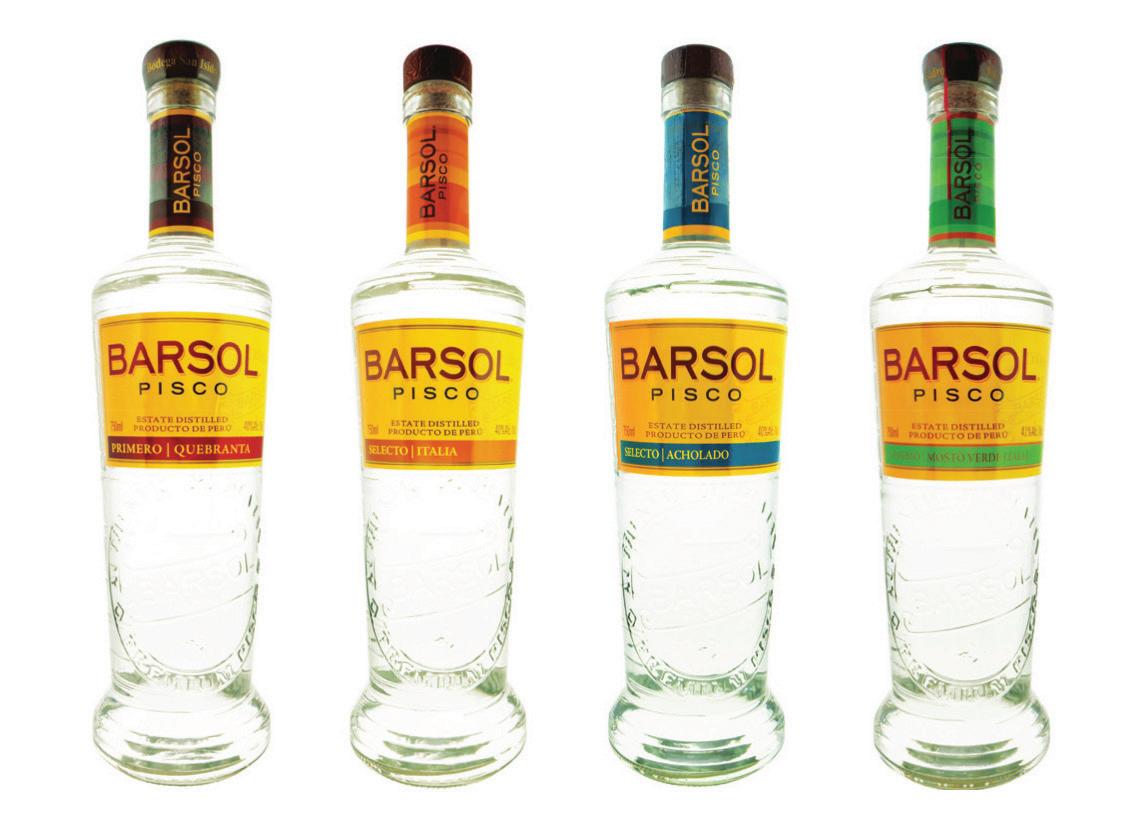
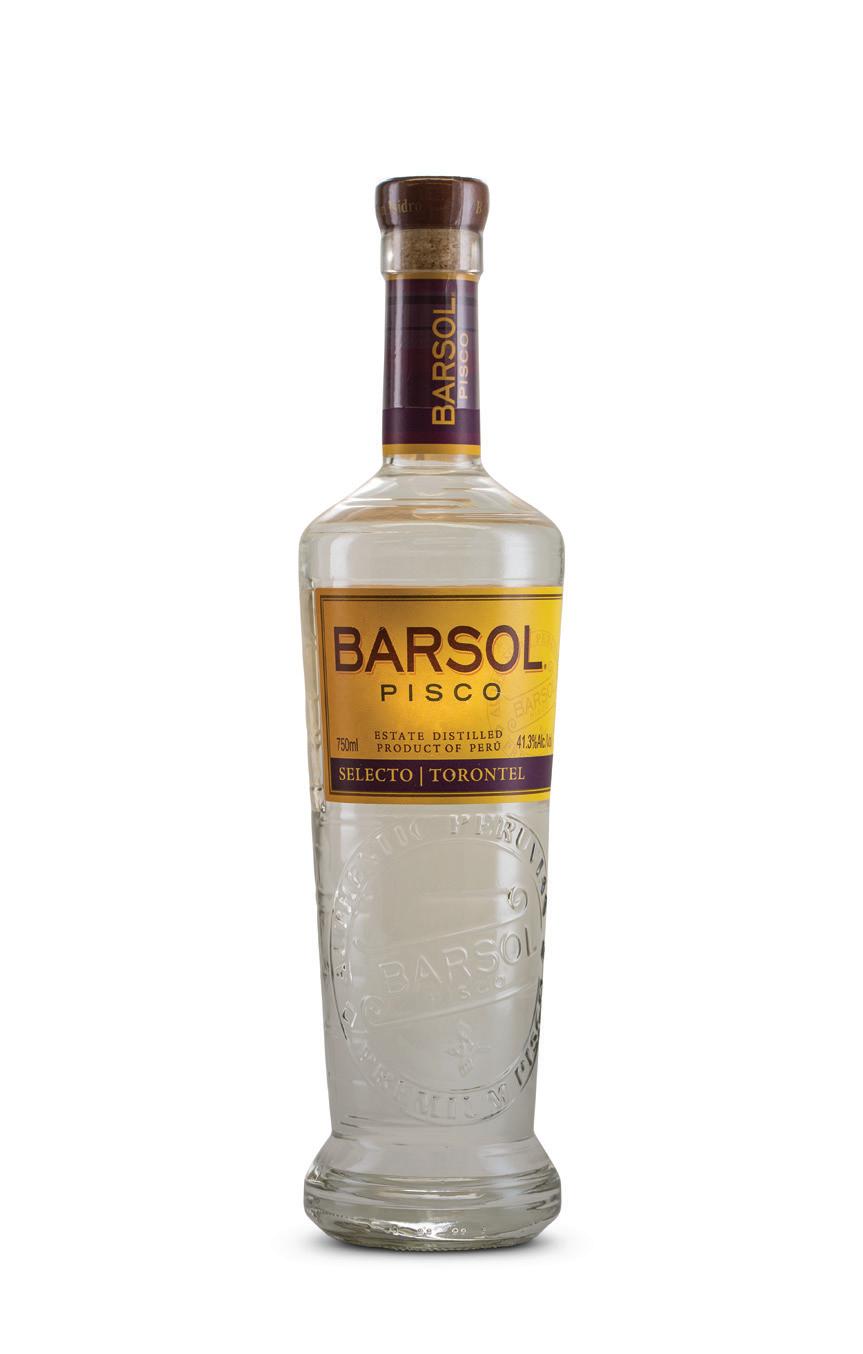

BARSOL PRIMERO QUEBRANTA PISCO This pisco single varietal is produced from wine resulting from the fermentation of 100% quebranta grapes from the Ica Valley.
41.3% ABV
DOUBLE GOLD MEDAL | San Francisco World Spirits Competition 2017
BARSOL SELECTO ITALIA PISCO Made from 100% Italia grapes, a close relative to the Muscat grape family, this is a favorite among piscos for its aromatic floral qualities and overall sweetness. 41.3% ABV
GOLD MEDAL | San Francisco World Spirits Competition 2017 92 POINTS | Ultimate Spirits Challenge 2013
BARSOL SELECTO ACHOLADO PISCO This product is the result of a blend of piscos distilled from the best selection of three pisco grape varietals of the Ica region: quebranta, italia and torontel. The breakdown is approximately 65-70% quebranta, 20% italia and 10% torontel, though the master blender keeps the true proportions a secret. The process beautifully incorporates the best characteristics of all three piscos, creating a spirit greater than the sum of its parts. 41.3% ABV
GOLD MEDAL | San Francisco Spirits Competition 2007
BARSOL SUPREMO MOSTO VERDE ITALIA PISCO Mosto Verde Italia is the magnum opus of artisanal pisco. This product differs from other BarSol expressions in that it undergoes a partial fermentation instead of a full fermentation. As a result, the wine that is distilled has an initial lower alcohol content of about 3 to 5%, with high residual sugars, aromas and flavors of the fresh Italia grapes. 41.8% ABV
GOLD MEDAL | San Francisco World Spirits Competition 2017 CHAIRMAN’S TROPHY | Ultimate Spirits Challenge 2013
“[BARSOL’S] DIEGO LORET DE MOLA IS PISCO’S PRINCE AND HEIR APPARENT...BARSOL’S QUEBRANTA MOSTO VERDE IS PERHAPS THE FINEST EXPRESSION OF THE QUEBRANTA GRAPE TO EVER BE BOTTLED...DIEGO’S LOVE FOR WHAT EACH INDIVIDUAL GRAPE HAS TO OFFER CAN BE SEEN IN BARSOL’S ITALIA AND TORONTEL OFFERINGS, WHICH ARE NOTHING SHORT OF MAGICAL.”
- Geoff Kleinman, DrinkSpirits.com -
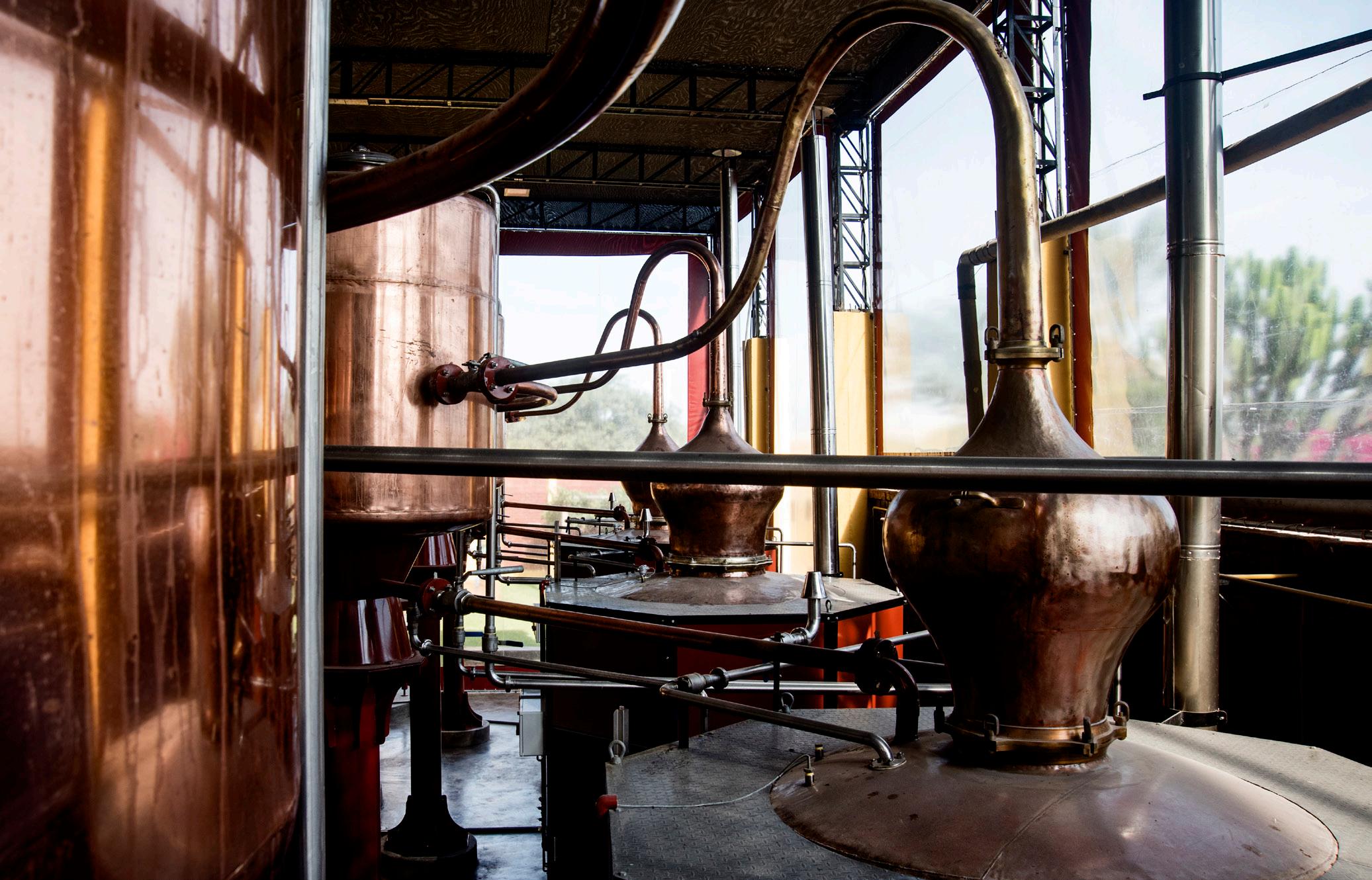
TOP | Peruvian pisco is distilled using copper alembic pot stills. The pisco making process is extremely sensitive and great accuracy is required. The master distiller only has one chance to distill the pisco. Peruvian pisco is the only spirit category in the world that by law has to distill its spirits to the “final bottle proof,” so no water or any other ingredients can be added to the process
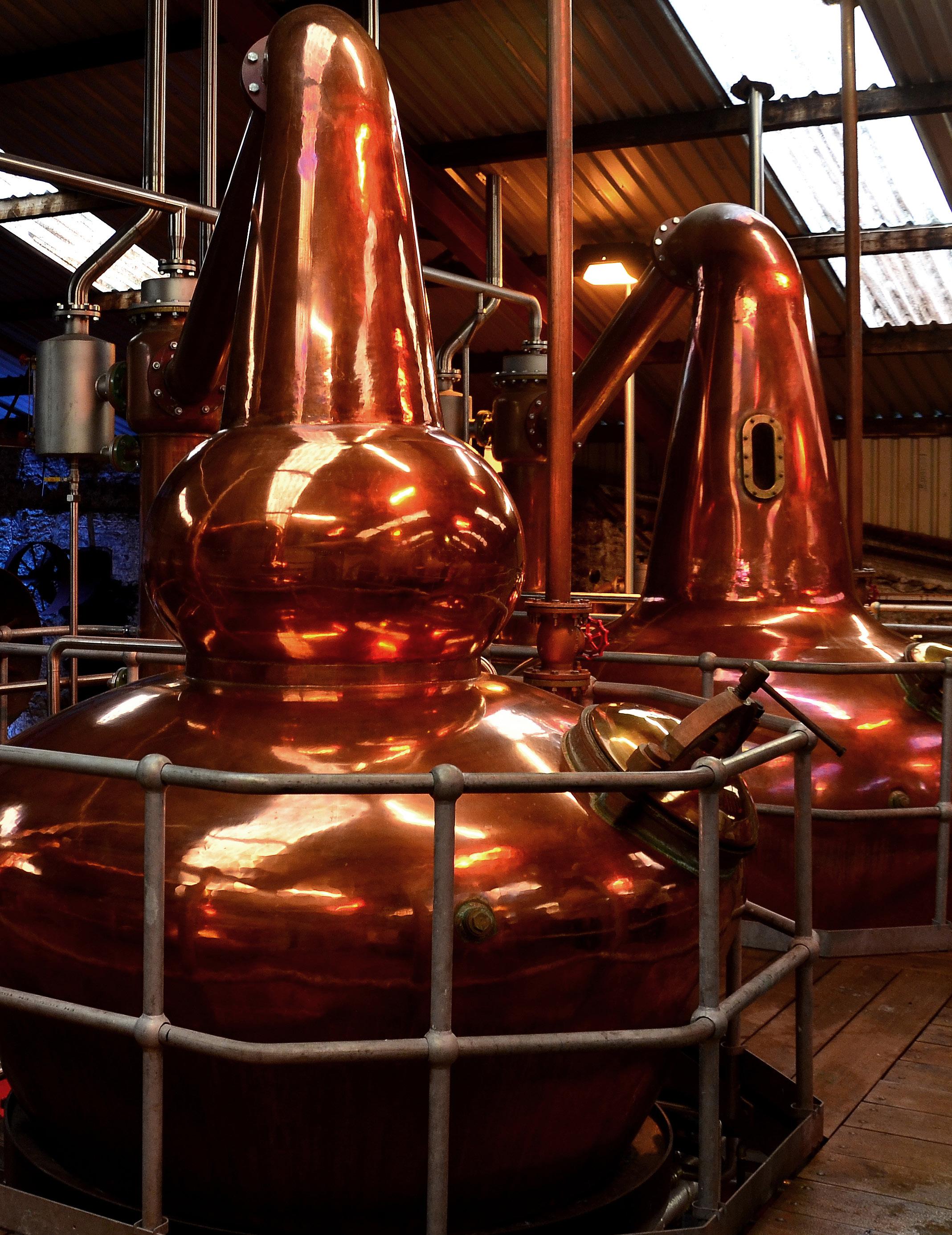
DINGLE DISTILLERY
- COUNTY KERRY, IRELAND -
IRELAND’S FIRST INDEPENDENT DISTILLERY TO RELEASE SINGLE POT STILL WHISKEY IN OVER A CENTURY, AND THE SPARK THAT IGNITED TODAY’S IRISH WHISKEY RENAISSANCE
A BRIEF HISTORY OF DINGLE | The Dingle Whisky distillery came into being during the cold Irish winter of 2012. The first casks of this soon to be iconic whisky were filled on December 18th of the same year. As the first spirit trickled from the stills at Dingle, it represented a milestone in the history of distilling in Ireland. Dingle Distillery has rekindled the tradition of independent distilling in Ireland. Two hundred years ago, Ireland had over a hundred officially recognized distilleries; by the turn of this century there were two. When Dingle Distillery launched in 2012, it was the first privatelyowned distillery to open in over 150 years in Ireland. The distillery was conceived by three independent spirits: Oliver Hughes; Liam LaHart and Peter Mosley. Oliver, Liam and Peter were also the men behind the Porterhouse Brewing Company; a pioneer in the Irish craft brewing scene in 1996.
Three hand crafted copper pot stills designed by Scotch whisky distiller John McDougall are used for a triple distillation. Each still is equipped with reflux inducing features including a large boil ball, and elongated necks providing a specific nuance to the whiskey. The individuality of Dingle’s stills results in a silky mouth feel and unique flavor profile.
The town of Dingle resides on the far western edge of Europe with a microclimate that is notably mild. The absence of extreme swings in temperature coupled with a constant maritime breeze allows Dingle whiskey to mature gracefully in the barrel. This unique microclimate creates a maturation like no other and is what gives Dingle single malt whiskey its profound ‘sense of place’.
Wooden mash tun and fermentation vessels are utilized in a nod to tradition. The spirit coming off the still is from the pristine deep well water that rests 240 feet below the distillery.
LEFT | Three hand-crafted copper pot stills inside the Dingle Whiskey Distillery. Their special design includes a boil ball, which encourages reflux during distillation and has much to do with the smoothness and purity of Dingle’s whiskey.










